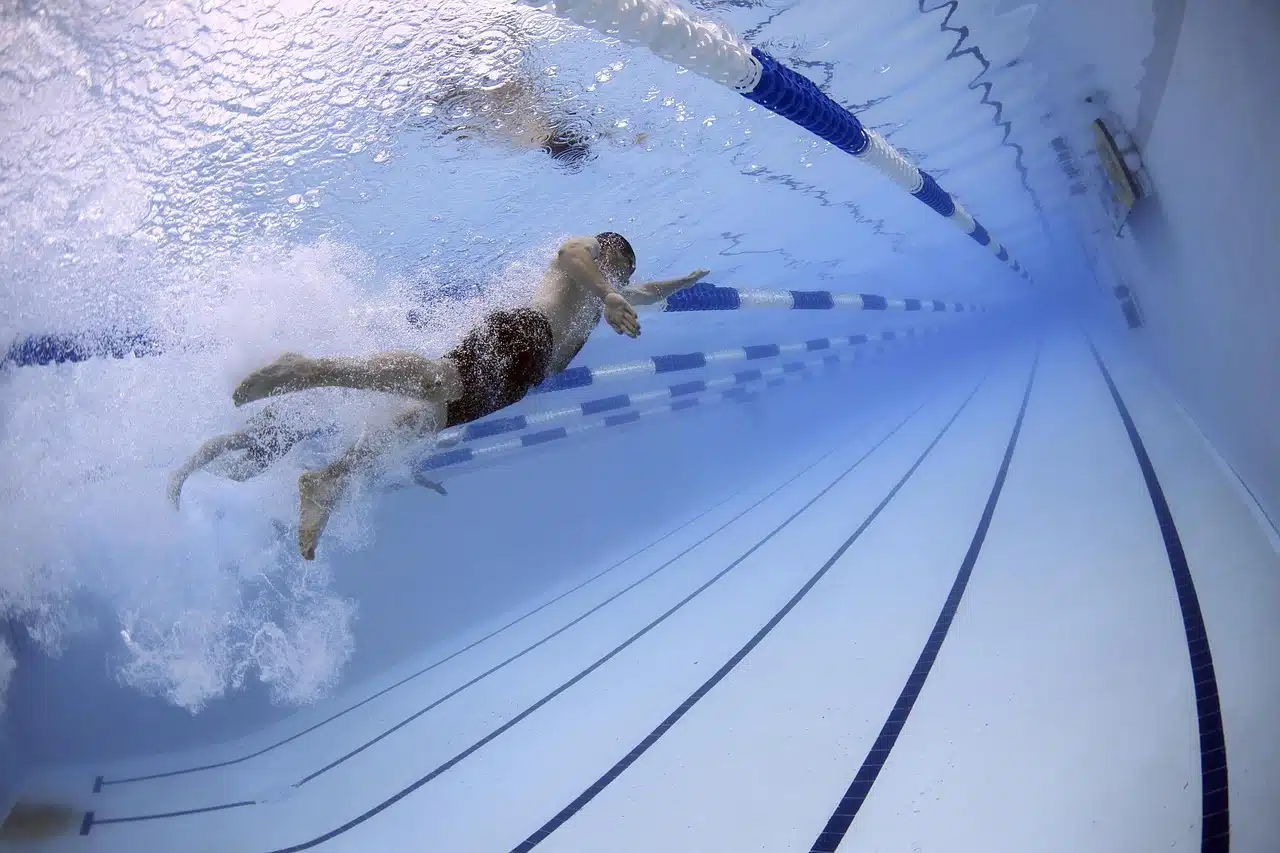
Swimming is the act and result of swimming.
Swimming is the action and effect of swimming . The term, coming from the Latin natatio , is also used to name the sport that consists of swimming at the highest possible speed to defeat opponents in a race .
Human beings have always tried by all means to adapt to the aquatic environment, a logical decision if we take into account that three quarters of the planet 's surface is covered in water. Swimming soon went from being a subsistence or commuting activity to becoming a sporting competition .
Various engravings from the Stone Age demonstrate that swimming was already an activity that was carried out in prehistory . Formal competitions, however, only became popular in the second half of the 19th century . In 1896 , for example, swimming was part of the first Olympic Games of the modern era.
Swimming styles
Competitive swimming includes four swimming styles : front crawl , butterfly , breaststroke and backstroke .
The crawl style is performed with one arm that moves in the air with the palm facing down to enter the water and the elbow relaxed, while the other arm moves underwater. The legs kick in an alternating motion.
In the butterfly stroke , the swimmer must bring both arms together in front, above the water, and then back. Meanwhile, an undulating movement of the hips is performed.
The breaststroke style consists of opening the arms with a backward movement until they are in line with the shoulders and shrinking the legs and then straightening them.
The backstroke , finally, is similar to the front crawl although the swimmer floats face up, with his back resting on the water.

Swimming is often considered a competitive sport.
The benefits of swimming
Just like other sports, swimming benefits us on many levels. However, it is distinguished from the rest by a series of characteristics; For example, it involves all major muscle groups and does not subject the body to impacts against solid surfaces. Furthermore, it nourishes the feeling of security and self-confidence, and can be practiced by people who, for certain reasons, are unable to carry out other sporting activities.
With respect to the heart, it is known that constant and moderate aerobic work is ideal for taking care of it, and swimming represents the aerobic practice par excellence. Swimming helps to muscle and strengthen the heart, and collaborates with the elimination of the fat that covers it, causing it to beat with more power and be able to carry more blood to the rest of our body. As if all this were not enough, the heart rate (that is, the number of contractions or pulsations it makes per unit of time) decreases during rest, and the performance of the circulatory system in general improves.
Swimming also contributes to strengthening the lung muscles; This means that we need to invest less energy to take in air, that is, we breathe more efficiently, oxygenating ourselves better and putting less stress on the lung muscles, in turn reducing the frequency with which we breathe.
When practicing the crawl style, for example, it is necessary to hold the air systematically, motivating the increase in the density of red blood cells and their ability to transport oxygen . As a result of this development, the lungs become more efficient while being cleansed of impurities.
Something that should not go unnoticed is that swimming gives us a feeling of independence and self-confidence, which improves our self-esteem . Furthermore, since it is usually practiced accompanied by other people and with scant clothing, it enriches us socially and strips us of prejudices and labels.
